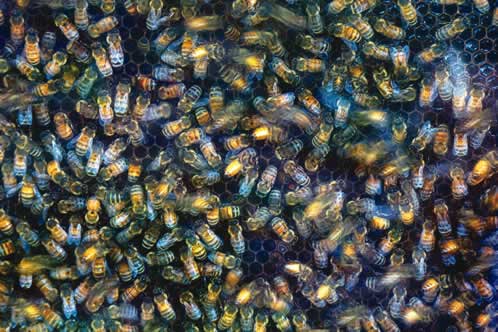The flight of the bird helped us design airplanes and we have studied fish for help in building a better swimming outfit for Olympic competition. This is known as biomimicry —the imitation of models, systems and elements of nature for the purpose of solving complex human problems.
This technique also can help us with a problem in the business world – leadership; or, rather, the lack thereof. Right now, we are in leadership trouble, according to some indicators. For instance, a recent poll from Gallup found that 7 out of 10 American workers hate their jobs, and 70 percent are disengaged at work as a direct result of poor management and leadership. Only 12 percent of organizations report having the leaders they need to succeed.
 Looking for a new leadership models to apply, we studied one of the most complex, highly functional leadership systems found on earth – the honeybee hive. We believe the beehive offers some key leadership concepts that can be applied in the business world:
Looking for a new leadership models to apply, we studied one of the most complex, highly functional leadership systems found on earth – the honeybee hive. We believe the beehive offers some key leadership concepts that can be applied in the business world:
- Survival of the Hive: Bees have an absolute obsession with what is good for the whole organization/team/department/group over what is good for any one bee. The whole hive’s vision, strategy and belief help define “due north” so every bee is committed to the greater purpose, direction and philosophy of surviving. Do we have a survival of the hive philosophy in our work or organization?
- The P-Factors: The pheromone system in the queen bee automatically ensures that her leadership exudes certain characteristics, which we have labeled the P-Factors. The leader bees footprint P-Factor, the ability to use its calming P-Factor and unifying P-Factor, as well as the strength to seek out resources through its resourcing P-Factorhelps prepare it to face any situation. When you think about it, every leader has a certain set of P-Factors or pheromones they exhibit. When we look at organizations today and some of their challenges, these P-Factor attributes are critical.
- The Colony Culture: A strong colony culture of collaboration, cooperation and trust happens uniformly and automatically at every place within the hive. There is a belief that being “in colony” will produce something exceptional, far greater than doing it alone. The beehive honey comb pattern exemplifies this concept of being interdependent and united.The leader’s role is to build the colony culture; it’s done in every meeting, in the break room, in the hallway. The leader defines the “what” and the “why” and lets staff define the “how.”
- The Front Porch Philosophy and CAMP: Forage and scout bees use the front porch of the hive to pass off collected pollen and nectar to worker bees in the hive. This is a great way of looking at responsibility and accountability as a behavior that every leader and follower accepts as they cross the “porch” to their own organization. Based on the CAMP method of motivation we found in the hive — Competence, Autonomy, Meaningfulness, and Progress— bees make a commitment to self-discipline and self-direction. An important question for us to ask as leaders is: Do members of my staff know they can take accountability and that I’ll have their backs when they do?
- The Bee-to-Bee Waggle Dance and buzz: Bees have achieved a spontaneous and constant form of communication. Leaders can learn from bees the value of defining their own waggle dance of communication and spread the waggle dance philosophy of communication throughout the organization, creating a unique and organic buzz.
- The Perfect Product Honey Stream: Bees only know to make a perfect product. Their honey stream can contract and expand dramatically to meet the honey production needs of the hive in the short time between spring and summer. Honey is the only food that includes all the substances to sustain life (enzymes, vitamins, minerals and water) with zero defects in every batch. The rhythm of the honey flow is known to every single bee. Leaders today must be immersed in the flow of work in their businesses, rather than observing from a removed position. Great leaders put themselves at the center of the organization and move openly among the workforce. They identify challenges, bottlenecks and constraints and work with staff to address them every day.
- Protect the Hive and Leaving the Post: Too often there are so many internal battles within organizations that no one is watching for real risks—like robber bees—outside the hive. Leaders can learn to respond to those risks, like bees, with the 4Rs Approach: Research, Report, Respond, and Recover, making sure not to react until the research confirms a problem and devoting time during recovery to surface, discuss and evaluate lessons learned. To make the 4Rs work, there must be a “leaving the post” mentality, like bees exhibit when they leave their task in order to help another bee in trouble.
Leadership is not something we’re born with. Instead, we should look to models and illustrations to help us form and mold our leadership style. Leadership takes practice. The more experience you get with it, the better you can become at it. That is, if you’re willing to put in the work – much like a honey bee.








